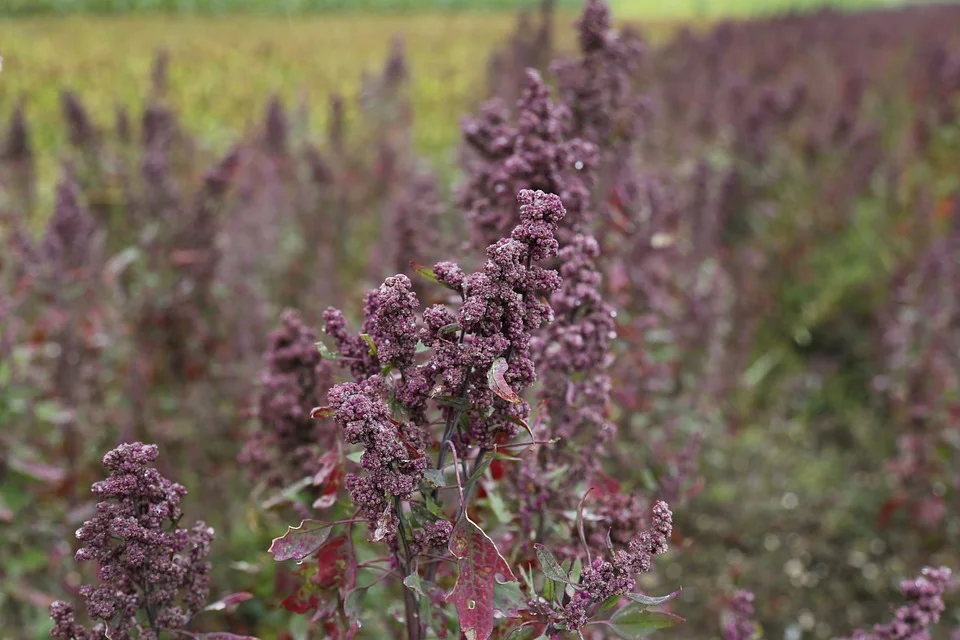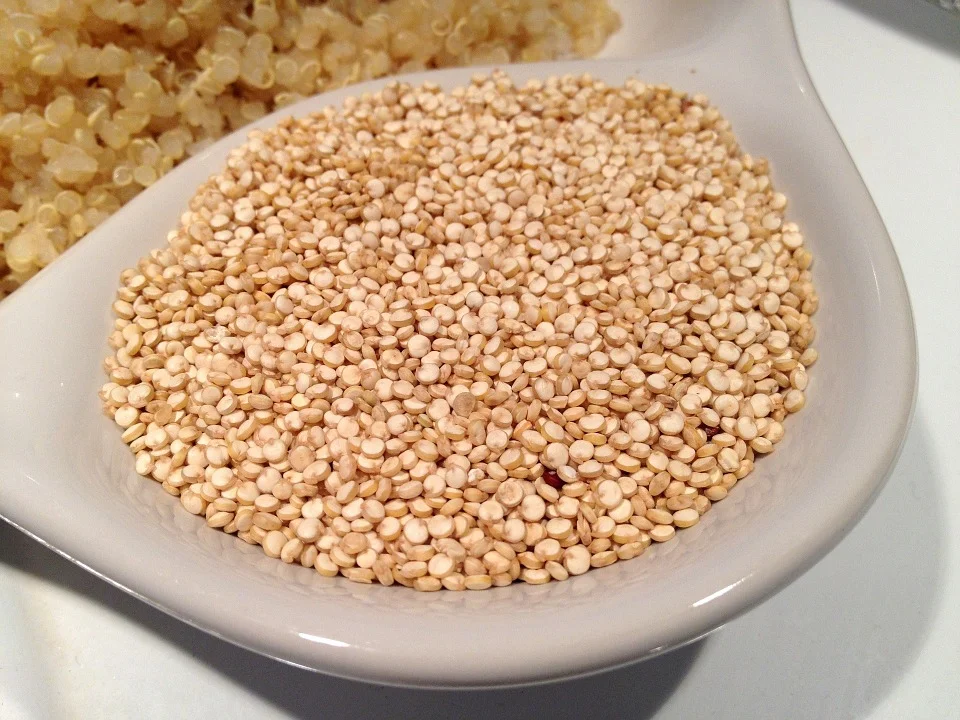Food fads come and go and, to be honest, some are a bit … well, sketchy at best. Many claim to have found the next “big” thing, a type of food that does it all - helps you lose weight, regrow hair, wash your car. Okay, so that last one isn’t real but you get the idea. Foods can do a lot for us (either good or bad), but how much of what we hear is true? And how much can these foods actually help you?
Today, we’d like to explore quinoa. For those of you who don’t know, it’s a seed normally grown in the Andes Mountains of South America that has been used as a staple food source there for thousands of years. The seeds are relatively small, circular, and come in a range of colors (though white, red, and black are the most common in American food stores). When cooked, it becomes light and fluffy (much like rice) with a slightly chewy texture and a nutty flavor. Unlike rice, which can harden and dry out easily, quinoa retains its texture even after cooled, making it an excellent choice for hot and cold dishes (not to mention leftovers).
Health Facts
Quinoa is a good source of protein, fiber, iron, copper, thiamin, and vitamin B6 (good, in this case, means it supplies at least 10% of the recommended daily value). It is an excellent source of magnesium, phosphorous, manganese, and folate (excellent means it supplies at least 20% of the recommended daily value).
So what makes quinoa such a great food? It is one of the only plants that is also a complete protein. That means that quinoa provides all the essential amino acids in the proper balance (amino acids are proteins that the body cannot produce which means we must get them from diet alone).
Besides its anti-inflammatory properties (thanks to phenolic acids and vitamin E family nutrients), quinoa’s fiber content can help to lower LDL cholesterol, “bad” cholesterol. The heart benefits continue as quinoa’s dietary flavonoids, heart-healthy monounsaturated fat, omega-3 fatty acids, and alpha-linolenic acids all help to work against heart disease.
Cooking Quinoa
I love cooking with quinoa for a lot of reasons. Besides its flavor and texture, quinoa takes a lot less time than most grains, requiring only 12 to 15 minutes of boiling. Consider exchanging the water used to cook quinoa for broth, juice, or a combination of both to add more flavor. In most recipes, rice can be exchanged for quinoa in equal amounts.
How do you cook it? Well, you can always follow the instructions on the packaging, but this is the basic process. First, rinse the quinoa. Why? The seeds are covered in saponins, a natural chemical that the plants produce to protect the seeds from fungi, bacteria, and viruses. Saponins have a bitter, almost soapy taste and in some cases can cause upset stomach, so give them a good rinse in cold water before cooking.
Second, bring some liquid to a boil. In most cases, for every cup of quinoa (dry) that you are using, add 1 1/2 cups of liquid. I love to use vegetable broth for savory dishes and apple juice for sweeter dishes. If in doubt, check the packaging for recommended amounts. I’ve found that a 1:2 ration is far too much liquid and usually use less (especially if I plan to add it to soup as it will absorb liquid once added as well).
Note: Before boiling, you can toast the cleaned seeds in a skillet over med-high heat, making sure to stir constantly to avoid burning, for 2 - 3 minutes. This will give the quinoa a lovely toasted flavor that will carry through the rest of the cooking process.
Third, after the liquid is at a boil, add the quinoa, cover, reduce heat to med-low or low. Then cook for 12 to 15 minutes.
How do you know it’s done? Thankfully, it’s very easy to tell. As you can see in the picture above, the raw quinoa will be solid in color (right). After they are done, the seeds will “pop” open and reveal an opaque kernel and you should be able to see a small squiggle (left). That little squiggle is actually the germ of the plant is the sign you’re looking for to be sure that the quinoa is done.
Quinoa for Dinner
Quinoa is an extremely versatile ingredient that can be added to soups, salads, casseroles, or eaten on its own. I love to mix it with sauteed veggies, toss it into my leafy salads (after cooling it to prevent wilting), or serve it simply as a side dish with a few herbs added during cooking. Once you master cooking quinoa, the possibilities really are endless, so have fun and don’t be afraid to add it to almost any dish.
Harvest Salad
Prep Time: 30 minutes Cook Time: 30 minutes
Serves: 6 - 10 depending on if used as main dish or side dish
Ingredients
2 cups quinoa (dry)
3 cups apple juice or apple cider
About 3 cups butternut squash, peeled, seeded, and cut into 1/2 inch cubes
Note: To save time, you can look for pre-cut squash at your local market
1/2 cup dried craisins, raisins, cherries, golden raisins, or some other dried fruit/berries
1/2 cup slivered almonds
1/2 apple, firm and tart, cored and cut into 1/2 inch pieces
1/4 cup fresh parsley, coarsely chopped (1 to 1 1/2 teaspoons if using dried)
2 tablespoons olive oil (or any cooking oil)
Salt and Pepper, to taste
Lemon Mixture:
1/4 cup lemon juice
1 cup water
Cooking
Rinse quinoa, drain, and set aside. If you don’t have a large, fine-mesh strainer, you can use a tea strainer though it will take more time as you have to work in small amounts.
Prepare and cut the butternut squash. Add oil to skillet and set to med-high. Add squash and cook, stirring occasionally, until fork-tender (about 20 minutes depending on size of pieces).
Add juice or cider to a medium sized saucepan and bring to a boil. Add the quinoa, stir, and cover. Cook for 12 to 15 minutes or until most of the liquid has absorbed and germ is visible on the kernels.
While the quinoa cooks, core and cut the apple. Dip and/or soak in a lemon juice mixture (1/4 cup lemon juice, 1 cup water) to help prevent browning. Set aside.
When quinoa has finished cooking, add the raisins (or whatever mix of dried fruit you prefer) to the saucepan and cover again. The steam from the cooked quinoa will help to “plump” the dried fruit.
Toast almonds (if you prefer) by adding them to a dry skillet and cooking over medium high heat for 2 - 3 minutes, stirring regularly to avoid burning.
Add all ingredients (except the lemon mixture), into a large bowl and stir to combine. Serve either hot or cold.
Information about quinoa found here:
Szalay, Jessie. Quinoa: Health Benefits & Nutrition Facts. Live Science, 19 April 2018. www.livescience.com/50400-quinoa-nutrition-facts.html. Accessed 8 January 2019




